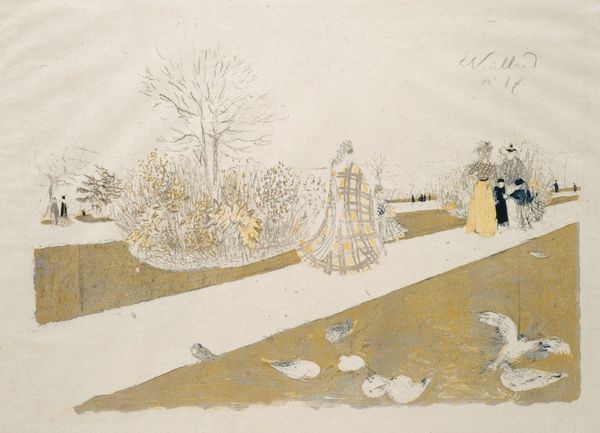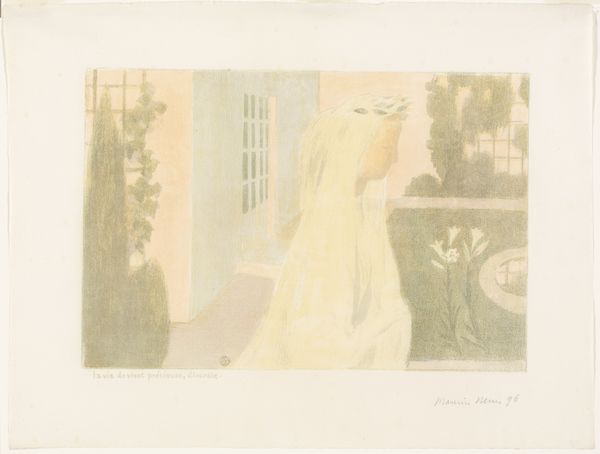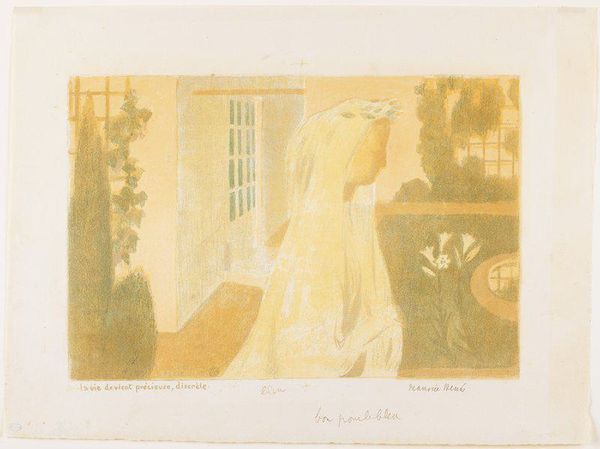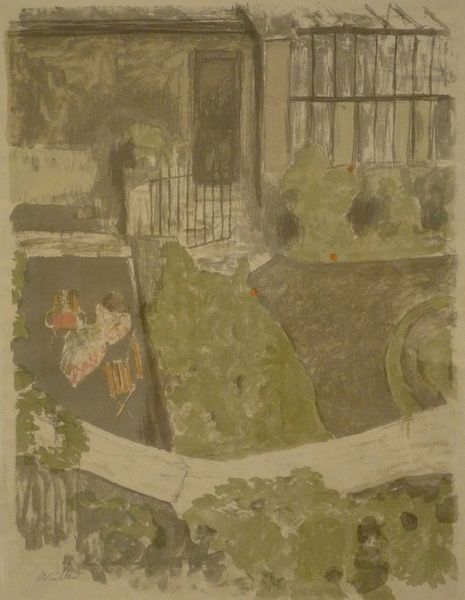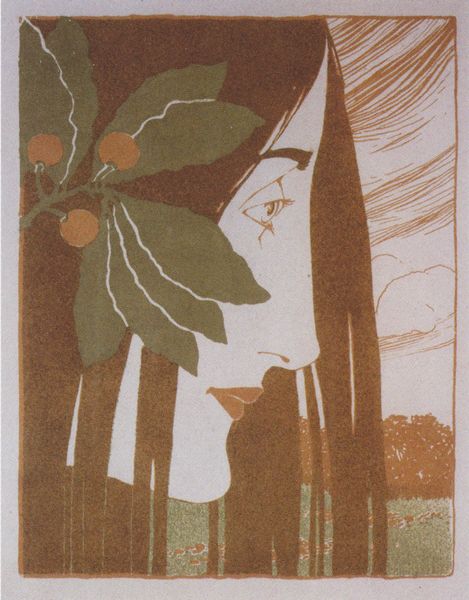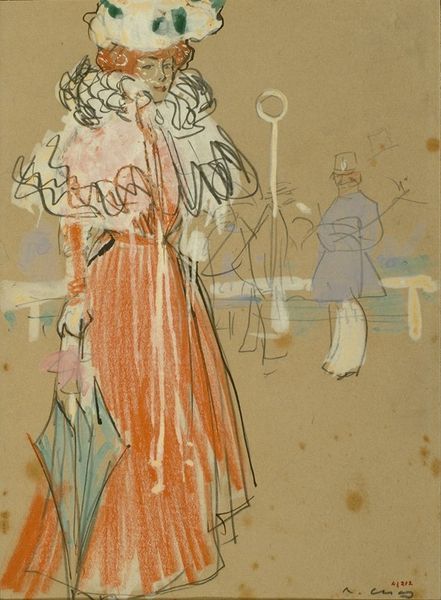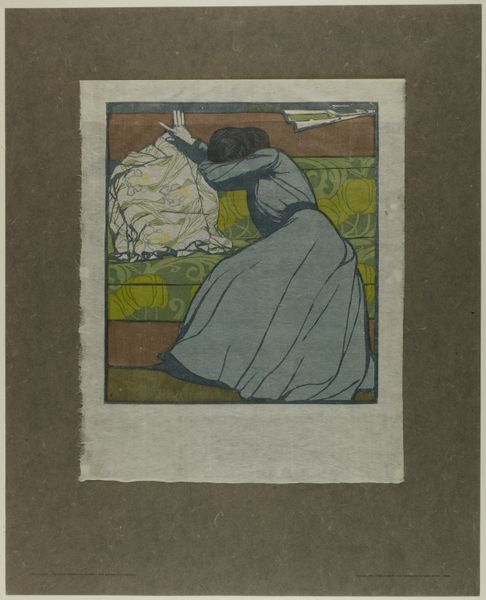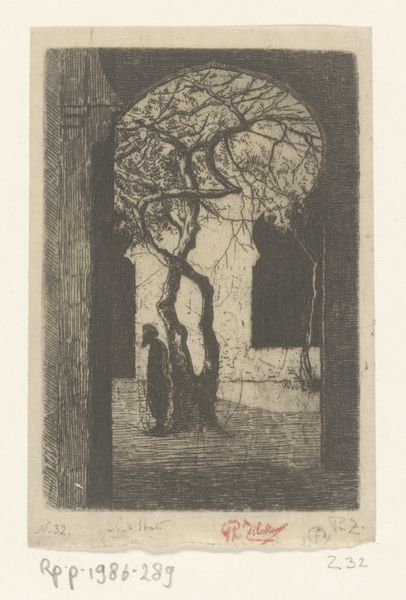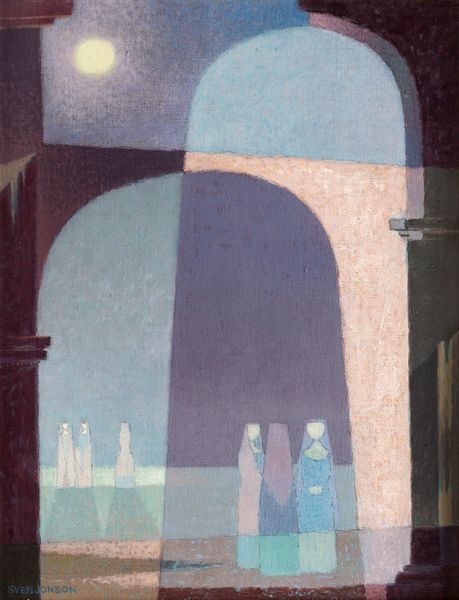
Dimensions: (36.67 x 31.27 cm) (image)16 11/16 x 13 15/16 in. (42.39 x 35.4 cm) (sight)
Copyright: Public Domain
Curator: Welcome. Today we're observing "The Visitation at the Villa Montrouge" a color lithograph crafted by Maurice Denis in 1896. It's currently part of the Minneapolis Institute of Art's collection. Editor: Right off the bat, it hits me as something wistful, maybe even a touch melancholic. The muted palette gives it this faded, dreamlike quality, doesn’t it? Curator: Indeed. Notice how Denis manipulates color and form to flatten the pictorial space, typical of the Symbolist aesthetic. The ochre tones and simplified shapes negate deep perspective, emphasizing instead the symbolic content. Editor: So, tell me more. What's the symbolic angle here? Is that cloaked figure supposed to be some sort of… allegory? Curator: The figures are thought to depict the Visitation from the Bible, where Mary visits Elizabeth. Denis transposes the scene to a contemporary, secular setting, the Villa Montrouge. Consider the interplay of the two central figures, set against the more distant, shadowed figures flanking the outbuilding. Editor: They seem almost like afterthoughts! Are they there for pure formal contrast, or do they also feed into the overall mood? Curator: Precisely. Their presence introduces an element of the unknown, perhaps even subtly unsettling, heightened by their somber attire. Moreover, consider the stylistic departure in comparison to Impressionism, although a plein-air sensibility is in the background in the lithograph's landscape features. Denis shifts focus from mere visual impression toward conveying emotion and spirituality through form. Editor: I suppose it's that layering of emotion over image that gets to me. It’s got an aftertaste to it. There’s something about the quiet scene of intimacy mixed with that solemn backdrop… it's a puzzle. It makes me wonder, were the Symbolists always this intense? Curator: Symbolism used simplified forms and expressive colors to probe psychological and spiritual states beyond surface appearances. Here, Denis harnesses these attributes expertly. The everyday merges with something transcendent. Editor: So it's less about what we *see* and more about what we *feel*. Fascinating how art can whisper secrets like that, across the ages, across intentions.
Comments
No comments
Be the first to comment and join the conversation on the ultimate creative platform.
